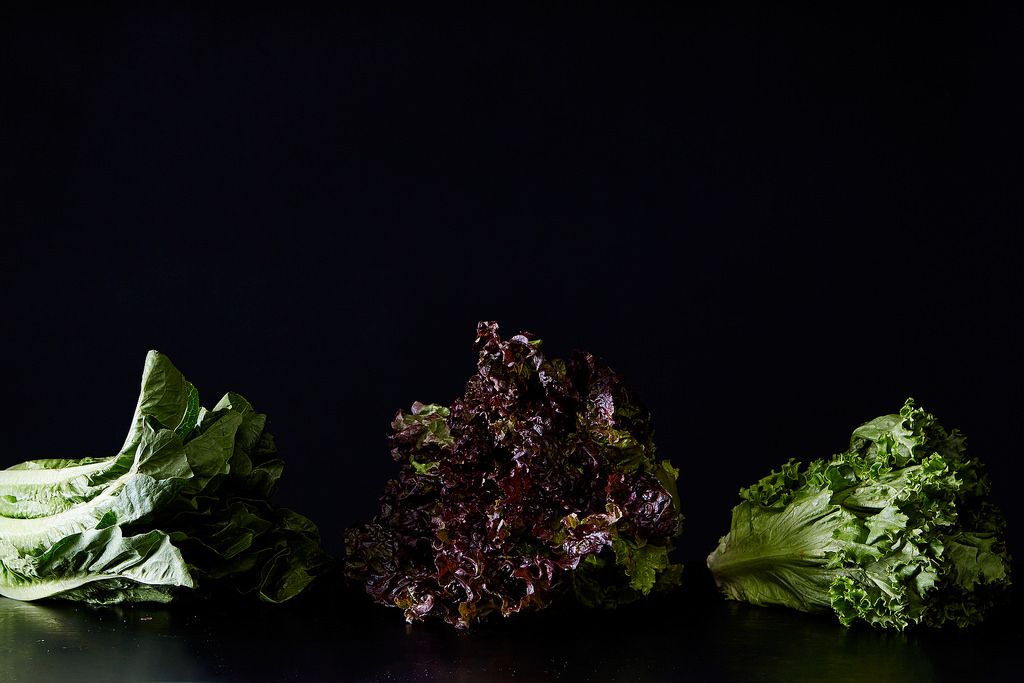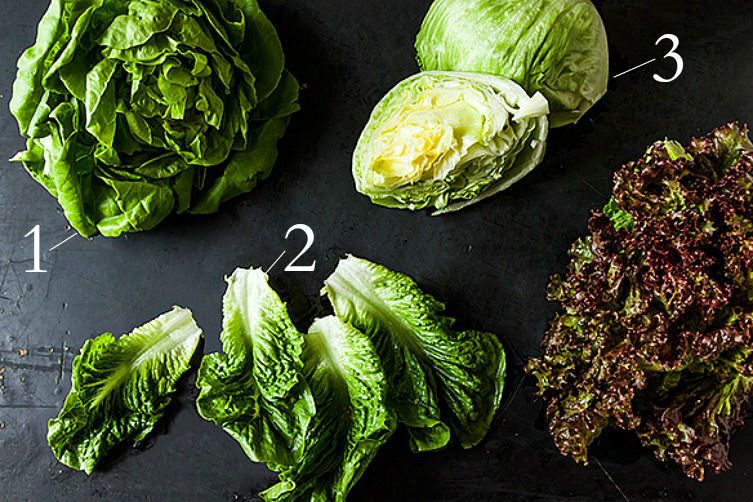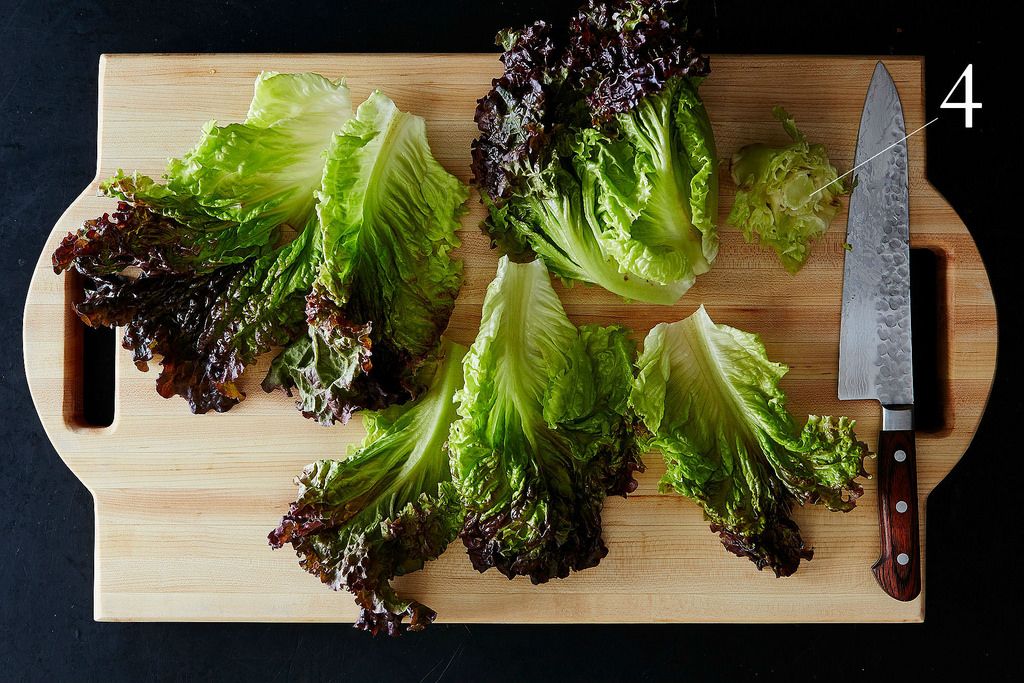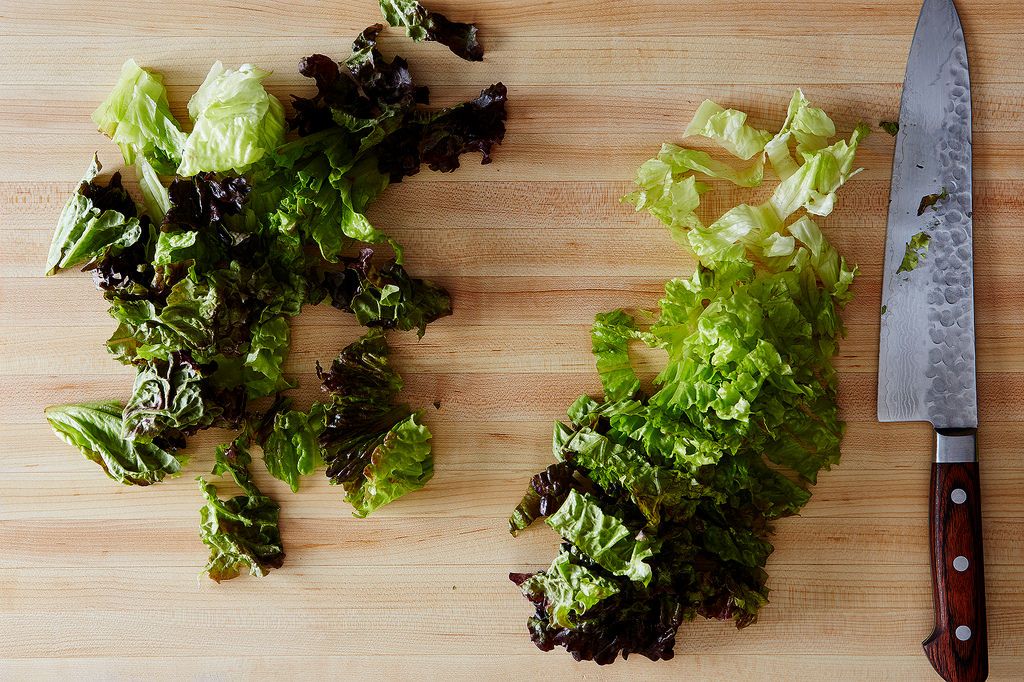Every week we get Down & Dirty, in which we break down our favorite unique seasonal fruits, vegetables, and more.
Today: Confused about the different types of lettuce? Don't lose your head—we're here to help.

Americans often start meals with salads, while Europeans are more likely to serve them at the end of the meal. We Americans might be smart to adopt the European standard on this one. Deborah Madison explains why in Vegetable Literacy: “In both ancient Egypt and ancient Rome, a lettuce salad served at the end of the meal was intended to bring on sleep.” And there’s something to this, as Madison elaborates: “Lettuce contains magnesium, chromium, and folate, all of which contribute a calming effect.”
Lest this lead you to believe that lettuce is a snooze fest, think again—this vegetable is anything but boring. There are hundreds of different varieties of lettuce, all of those eaten for their leaves fit into one of four major types. Mark Bittman breaks them down in his book Leafy Greens:
-
Crisphead lettuce (3, below): Better known as iceberg, it's rarely grown by gardeners and always sold in supermarkets; good texture, very mild flavor.
-
Cos or romaine lettuce (2, below): long, narrow leaves with fleshy, crunchy ribs; more flavorful than iceberg.
-
Butterhead lettuce (1, below): such as Boston or Bibb, which forms a soft but fairly well-defined head with lots of loose outer leaves; very tender, delicate texture.
-
Looseleaf, bunching, or cutting lettuce: no real head; just a bunch of leaves joined at the base.
More: There’s another type of lettuce that’s grown for its stem rather than its leaves: Meet celtuce.


There’s no need to wash your lettuce until you’re ready to use it; in fact, it will last longer if you don’t. When you’re ready to eat it, wash the leaves well (no salad spinner necessary) to get rid of any grit.
Lettuce might be considered a B-list spring vegetable, but it still needs to be treated with respect. Whether you prefer to tear or chop, lettuce's delicate leaves can bruise easily, so treat them gently.
Fun fact: Lettuce’s scientific name is Lactuca sativa, and the root of the genus—Lactuca—means “milk.” That refers to the milky-white liquid you see when you slice or tear the leaves away from the base of the head (4, above).
More: Grow up already and start storing your greens like an adult.

It goes without saying that lettuce belongs in salads and sandwiches, but don't stop there—here are 9 other ways to put lettuce to good use:
1. Pickle it!
Shalotta, Mom's Pickled Lettuce Condiment
2. Grill it!
Fully Grilled Caesar Salad
3. Stir-fry it!
Grace Young's Stir-Fried Lettuce
4. Braise it!
Glazed Carrots with Braised Bibb Lettuce or Vignarola (Roman Spring Vegetable Braise)
5. Broil it!
Petits Pois à la Française Redux
6. Wrap it!
Summer Presents
7. Add it to soup!
Lemon-Chicken & Pepe Soup
8. Put it on nachos! (Really!)
Memphis-Style Pulled Pork Nachos
9. Wilt it! (Okay, this one is technically a salad. Sorry.)
Jeffrey Alford and Naomi Duguid's Luang Prabang Fusion Salad
Tell us: How do you like to use leaf lettuces?
Photos by Mark Weinberg and James Ransom
See what other Food52 readers are saying.